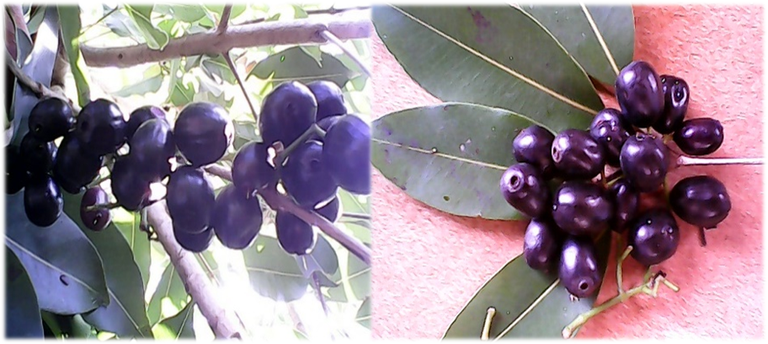
Estaba preocupado, ha sido un año difícil para los vinicultores que fabricamos los vinos a partir de frutas naturales frescas, recolectadas en nuestra provincia pinareña. Esa fue la condición que me puso Tila, mi abuela materna, cuando hace más de 50 años, siendo un niño le pedí que me enseñara su ya centenario oficio.
Con una condición, me dijo, y es que no inventes con otras cosas que no sean frutas, de preferencia el Marañón y la Naranja; ni cambies la receta original.
En honor a ella he sido casi fiel y digo casi porque si bien las frutas, aunque se han diversificado por los efectos de la casi desaparición de algunas de ellas precisamente las originales en el vino de abuela, han sido la única fuente, la receta ha sufrido algunos cambios no esenciales provocados por los efectos del período especial y sus carencias. Afortunadamente la receta mantiene el 90% de su fórmula original.
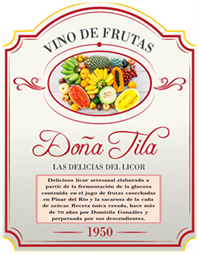
Desde octubre de 2023, en los lugares que sufrieron los efectos del huracán “Ian” que azotó a Pinar en septiembre, elaborar vinos de frutas ha sido muy difícil por la devastación de casi toda la flora de los municipios afectados. En mi caso particular los vinos “Doña Tila” se han mantenido, sin embargo, he pasado meses haciéndolo de Ciruela china (Carambola), comprada por cantidades en el municipio de Guane.
I was worried, it has been a difficult year for winemakers who make wines from fresh natural fruits, harvested in our Pinar del Río province. That was the condition that Tila, my maternal grandmother, set me when more than 50 years ago, as a child, I asked her to teach me her already centenary trade.
On one condition, she told me, and that is that you do not invent with things other than fruits, preferably cashew and orange; nor change the original recipe.
In honor of her I have been almost faithful and I say almost because although the fruits, although they have diversified due to the effects of the almost disappearance of some of them precisely the original ones in the grandmother's wine, have been the only source, the recipe has suffered some non-essential changes caused by the effects of the special period and its deficiencies. Fortunately, the recipe maintains 90% of its original formula.
Since October 2023, in the places that suffered the effects of hurricane "Ian", which hit Pinar del Río in September, making fruit wines has been very difficult due to the devastation of almost all the flora in the affected municipalities. In my particular case, the "Doña Tila" wines have been maintained, however, I have spent months making it from Chinese plum (Carambola), bought in bulk in the municipality of Guane.
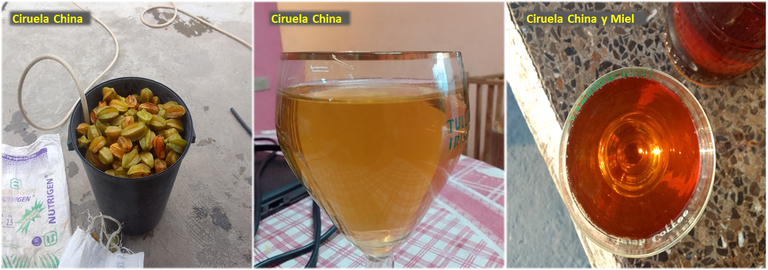
Esta temporada fue prácticamente imposible elaborarlos de Marañón y mucho menos de Naranja, casi en extinción con independencia de los ciclones. Por otra parte, una de las frutas que más sufrió fue el Jambolán. Los vientos se ensañaron con estos árboles. Las plantas sembradas en la finca del viejo, quedaron destrozadas.

No obstante, y pese al desastre llegó agosto, mes en que se recogen las producciones de este frutal. Salimos en su búsqueda y localizamos algunas plantas en producción a 14 kilómetros de la ciudad de Pinar. Había que hacer el esfuerzo, esta fruta produce un excelente vino; para mí, mi familia y mis amigos el mejor de todos. Es un tinto excelente en todas sus variantes (seco, semiseco, semidulce y dulce); cuando se usa poca fruta, o solo el jugo sin la piel (orujo), entonces se obtiene también un rosado de inmejorable calidad.
El arbol Jambolán, nominado también como Ciruela de Java, aunque no es endémico de Cuba, es una planta tropical y subtropical, por lo que se adaptó a nuestra tierra sin dificultad y una vez en ella ha adoptado nombres tan diversos como la localidad donde habite: Jambul; Fortín (en honor al recordado vino de pasas fabricado industrialmente en Cuba hace algunos años); Ciruela negra; Uva de la India; Mora; etc.
El fruto o ciruela en forma de aceituna va mutando de color según madura, desde el verde hasta el negro y el púrpura brillante. Es rico en vitamina A y C y, junto a las hojas y la cáscara o corteza del tronco se le reconocen otras propiedades en la atención a problemas digestivos, cardíacos y de diabetes, entre otros.
This season it was practically impossible to produce them from Cashew and much less from Orange, almost in extinction independently of the cyclones. On the other hand, one of the fruits that suffered the most was the Jambolán. The winds were very harsh on these trees. The plants planted on the old man's farm were destroyed.
However, despite the disaster, August arrived, the month in which the production of this fruit tree is harvested. We went out in search of them and located some plants in production 14 kilometers from the city of Pinar. We had to make the effort, this fruit produces an excellent wine; for me, my family and my friends the best of all. It is an excellent red wine in all its variants (dry, semi-dry, semi-sweet and sweet); when little fruit is used, or only the juice without the skin (orujo), then a rosé of unbeatable quality is also obtained.
The Jambolán tree, also known as Java Plum, although not endemic to Cuba, is a tropical and subtropical plant, so it adapted to our land without difficulty and once there it has adopted names as diverse as the locality where it lives: Jambul; Fortín (in honor of the remembered raisin wine industrially manufactured in Cuba some years ago); Black Plum; Indian Grape; Mulberry; etc.
The olive-shaped fruit or plum mutates in color as it ripens, from green to black to bright purple. It is rich in vitamin A and C and, together with the leaves and the peel or bark of the trunk, other properties are recognized in the attention to digestive, cardiac and diabetic problems, among others.
Cuando está maduro, el zumo de su pulpa o masa es de color malva intenso o rojo, tanto que mancha la piel y la ropa como la sangre. Su pulpa se usa para hacer mermelada, jaleas y jugos. Sin embargo, en Cuba no se consume como tal por su sabor entre dulce, un poco ácido y astringente.
Su mayor consumo en Cuba es en forma de vino. Yo lo conocí hace alrededor de 25 años y comencé a utilizarlos en esta bebida. Después lo sembré en la finca de mi padre y desde entonces lo empleo como materia prima por largas temporadas.
No podía ser de otra manera, ante tantas cualidades había que buscarlo.
Pero, la ruta estuvo bendecida; justo, a mitad del viaje está la casa de mi abuela Tila, nos detuvimos y le hicimos algunas fotos. Las vivencias de la infancia regresan; los domingos en que religiosamente pasábamos el día correteando la finca, cercada de marañones y poblada de Naranjas, Mandarinas, Limas, Anones, Chirimoyas, Guanábanas, Rollin, Guayabas del Perú, entre otras que se me pierden en el tiempo.
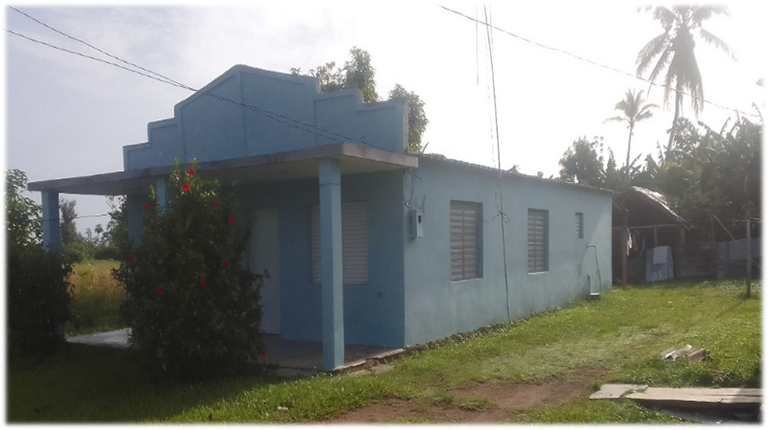
No puedo entrar porque sus dueños actuales, no están; me identifico con los vecinos de la casa de al lado (antes no estaba, la única era la de mi abuela). Pido permiso para sacarle esta foto, a pesar de que el estado del tiempo malogra su calidad. Es increíble -dice uno de mis acompañantes- la casa de tu abuela, tu mamá, tus tíos, tus primos por casi 100 años y dónde te criaste, ahora hay que mirarla de lejos.
Me emocionan estas palabras y con el pensamiento entro; parece estar viendo a mi abuela ante aquellos altos anaqueles que sostenían los más de 20 garrafones de cristal donde añejaba su elixir de la vida. La veo salir de allí con una jarra de vidrio sostenida con sus dos manitas, para llenar pequeñísimos vasitos de colores con aquel maravilloso vino que deleitaba a sus numerosos visitantes. Nunca ofrecía café, siempre regalaba vino.
When ripe, the juice of its pulp or mass is an intense mauve or red color, so much so that it stains skin and clothes like blood. Its pulp is used to make jams, jellies and juices. However, in Cuba it is not consumed as such because of its sweet, slightly acidic and astringent flavor.
Its main consumption in Cuba is in the form of wine. I got to know it about 25 years ago and began to use it in this drink. Then I planted it in my father's farm and since then I use it as raw material for long periods of time.
It could not be otherwise, given so many qualities it was necessary to look for it. But, the route was blessed; right in the middle of the trip is the house of my grandmother Tila, we stopped and took some pictures. The childhood experiences come back; the Sundays when we religiously spent the day running around the farm, surrounded by cashew trees and populated by Oranges, Mandarins, Limes, Anones, Cherimoyas, Guanábanas, Rollin, Guavas of Peru, among others that are lost in time.
I can not enter because the current owners are not there; I identify myself with the neighbors of the house next door (before it was not there, the only one was my grandmother's). I ask permission to take this photo, although the weather conditions spoil its quality. It is incredible -says one of my companions- the house of your grandmother, your mother, your uncles, your cousins for almost 100 years and where you grew up, now you have to look at it from afar.
I am moved by these words and with the thought I enter; it seems to be seeing my grandmother in front of those high shelves that held the more than 20 glass carafes where she aged her elixir of life. I see her coming out of there with a glass decanter held in her two little hands, to fill tiny little colored glasses with that wonderful wine that delighted her numerous visitors. She never offered coffee, she always gave wine as a gift.
Pasan también los recuerdos de las vacaciones escolares en que pasábamos las mañanas y las tardes, después que bajaba el sol de agosto, pescando biajacas criollas en la laguna de la finca con los tíos Norbe y Paquito, quienes nos obligaban a devolver al agua las más pequeñas para después comer la pesca, frita en manteca de puerco.
También llega lo malo; aquella enorme palangana o batea metálica llena de agua, en que, a fuerza de estropajos hechos a partir de unos frutos secos recogidos en las enredaderas vegetales de las cercas de la finca, las tías Raque y Meca, uno por uno, nos devolvían el color de nuestra piel, cara, pelo y orejas, pintadas casi del negro de la tierra de la sabana ¡nadie quería ser el primero en entrar a esa cámara de torturas! Después de cada restregada, invariablemente había que cambiar el agua negra de la palangana por el agua fría del pozo artesano.
Abuela, con 92 años ya se fue hace más de 20; luego emigraron los tíos y los primos. Sin embargo, la casa está allí, como santuario al que hay que rendirle pleitesía, porque allí comenzó esta historia, allí aprendí a fabricar el vino. Los dueños actuales la conservan bien. Aunque extraño el rojo de sus tejas, la nueva cubierta metálica también le favorece.
Memories of the school vacations when we spent the mornings and afternoons, after the August sun went down, fishing for biajacas criollas in the lagoon of the farm with uncles Norbe and Paquito, who forced us to throw the smallest ones back into the water and then eat the catch, fried in pork lard.
Then came the bad part; that huge basin or metal pan full of water, in which, by dint of scouring pads made from dried fruits collected from the vegetable vines on the fences of the farm, aunts Raque and Meca, one by one, returned the color of our skin, face, hair and ears, painted almost the black of the earth of the savannah, no one wanted to be the first to enter that torture chamber! After each scrubbing, we invariably had to change the black water in the basin for the cold water from the artesian well.
Grandmother, at 92 years old, left more than 20 years ago; then the uncles and cousins emigrated. However, the house is there, as a shrine to which we must pay homage, because that is where this story began, where I learned to make wine. The current owners keep it well preserved. Although I miss the red of its roof tiles, the new metal roof is also in its favor.
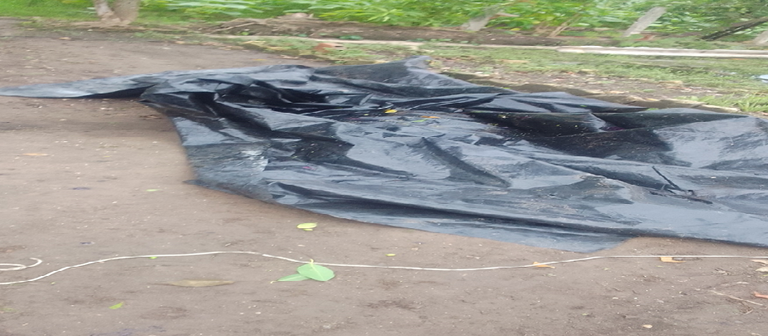
Repletos de energía, y de recuerdos, seguimos camino hasta llegar al destino. El viaje de fin de semana coincidió con la lluvia y por tanto con bastante humedad y fango. La manta de polietileno negro, se tiende entre todos debajo de cada árbol de Jambolán que se sacude y así se va arrastrando en círculos alrededor del árbol para hacerla coincidir con el gajo de turno encima de ella.
No hay muchos, pero son suficientes para no dejar la temporada sin esta deliciosa bebida. Organizados en dos equipos. El más joven sube para, con todo el cuidado del mundo por la fragilidad de las nuevas ramas, sacudir desde arriba. Los demás nos quedamos debajo para con mucho cuidado y delicadeza, una a una recoger las ciruelas que caen.
Las ciruelas se precipitan a cada sacudida; muchas revientan al chocar en el suelo duro cubierto por la manta de polietileno, pintando la escena de rojo tinto y de negro. Las que estallan pierden jugo, pero también sirven, aún tienen parte de su pulpa y conservan su piel. Otra que se recogen al alcance de la mano y no sufren daños, sobre todo en los arbustos jóvenes, merecen ser besadas.
Full of energy and memories, we continued on our way to our destination. The weekend trip coincided with rain and therefore with a lot of humidity and mud. The black polyethylene blanket is spread out under each Jambolan tree that is shaken and thus dragged in circles around the tree to match the gore in turn on top of it.
There are not many, but there are enough not to leave the season without this delicious drink. Organized in two teams. The youngest climbs up to, with all the care in the world because of the fragility of the new branches, shake from above. The rest of us stay below to carefully and delicately, one by one, pick the plums that fall.
The plums rush down with each shake; many burst as they hit the hard ground covered by the polyethylene blanket, painting the scene red and black. Those that burst lose juice, but they are also useful, still have some of their pulp and retain their skin. Others that are picked within reach and do not suffer damage, especially on young bushes, deserve to be kissed.

La producción no es abundante como en otras temporadas, pero valió la pena; habrá vino de Jambolán.
Tres o cuatro horas después, el regreso, la llegada a casa, el café y la limpieza de las frutas. De nuevo me parece estar escuchando a doña Tila:
Una a una y con agua de pozo, nada de agua con cloro. Que no le quede un grano de tierra.
Ya lavadas durante casi tres horas, entonces el estrujado para sacar y apartar las semillas; el zumo y las pieles negras que se convertirán en el mosto original. Después del tiempo normado por la receta, solo queda colar, clarificar y embotellar. Este año también habrá “Doña Tila” de Jambolán.
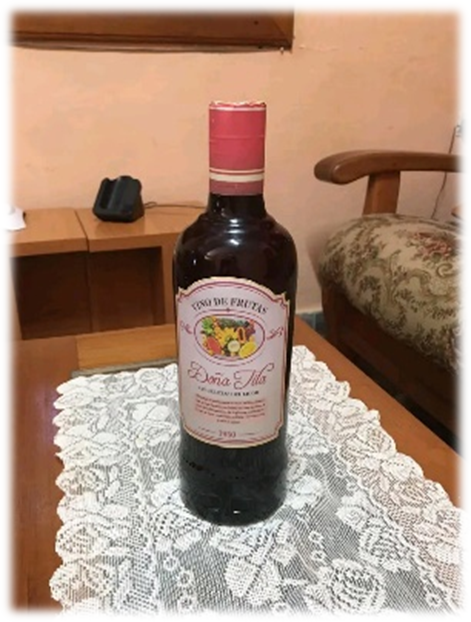
The production is not abundant as in other seasons, but it was worth it; there will be wine from Jambolán.
Three or four hours later, the return, the arrival home, the coffee and the cleaning of the fruits. Again I seem to be listening to Doña Tila:
One by one and with well water, no chlorinated water. Not a grain of dirt left on them.
Once they have been washed for almost three hours, then they are squeezed to remove and separate the seeds, the juice and the black skins that will become the original must. After the time required by the recipe, the only thing left to do is to strain, clarify and bottle. This year there will also be "Doña Tila" from Jambolán.
Texto traducido al inglés por DeepL Translate. Las fotos fueron tomadas con un Iphpne 8 y un Samsung Galaxy A03 Core de mi propiedad.
Text translated into English by DeepL Translate. The photos were taken with an Iphpne 8 and a Samsung Galaxy A03 Core of my property.
Oh, I never Heard wine from Jambolan. I thought all wine from grapes 😅
Thank you so much for sharing 😊
Greetings from Cuba. Thank you for your comment. Yes, in Cuba artisanal wines are made from tropical fruits. They are delicious, I invite you to try them.
Congratulations @bertico! You have completed the following achievement on the Hive blockchain And have been rewarded with New badge(s)
Your next target is to reach 1250 upvotes.
You can view your badges on your board and compare yourself to others in the Ranking
If you no longer want to receive notifications, reply to this comment with the word
STOPCheck out our last posts:
Oh, que buena experiencia poder leer de este arte de hacer vino, y más sabiendo que es cercano, amigo pinareño eso se ve delicioso.
Saludos y prosperidad en esa iniciativa🙌🙌🙌🙌🙌
Si, es una cultura muy linda, cuando se respeta. Al menos esta forma de elaborarlo. Gracias por tu comentario
Ese tipo de trabajo se disfruta mucho. Yo he aprendido alguito la receta de Tila gracias a usted 😁
Pero que acabo de leer...con lo que me encanta el vino a mi . Interesante tu artículo amigo Bertico, creo que hacer vino artesanal es un arte pasado por generaciones familiares, pues para lograr este nectar tan delicioso 😋 debe existir un maestro vinero detrás. A ver si un día nos muestra más de este buen vino 🤩
Puedes estar seguro que lo probarán.
Wow!!! Qué post tan exitoso. Me alegra mucho leerlo. El vino es hecho por un artista.
Gracias amigo. Probarás el vino? Te lo prometo.
Mientras te leo creo que lo pruebo
Que rico un vinito, muy interesante post .un saludo y feliz día .
Delicioso y saludable por sus propiedades. Gracias @mariolis
Interesante post ,saludos.
Gracias marcos.
De nada hermano, buen trabajo
Que bonita herencia y sobre todo que la has mantenido a pesar de las dificultades. Saludos.
Familia y tradición, resultados de la educación...familiar